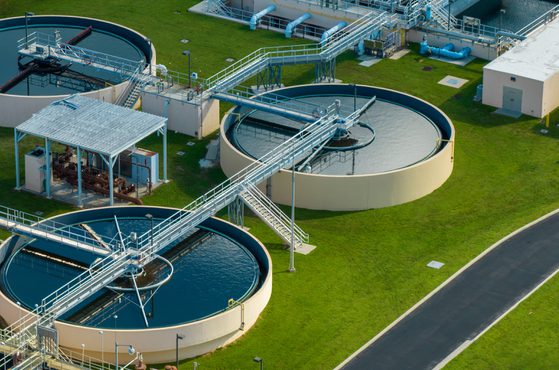Health and safety law applies to every business. Yet not all businesses are aware of the responsibilities they have to discharge to ensure compliance — and the risks associated with any failures to comply.
Many directors are unaware of their own liability when it comes to health and safety and may face personal prosecution for any breaches.
Here, Claire Burrows and Alex Walton provide an easy-to-understand guide to health and safety law in England and Wales.
Who is responsible for enforcing health and safety law?
The Health and Safety at Work etc Act 1974 (HSWA) is the primary piece of health and safety legislation in Great Britain.
If a regulator — commonly the Health and Safety Executive (HSE), which is the National Independent Regulator for Health and Safety in the workplace or a local authority — has reason to believe that an organisation has committed a breach, it may take enforcement action against that business.
Here are five key aspects of legislation that all businesses must be aware of.
1. Legislation — HSWA Section 2
“It shall be the duty of every employer to ensure, so far as is reasonably practicable, the health, safety and welfare at work of all of his employees”.
Requirement
It’s significant that there’s no requirement for an accident to have occurred that caused death or injury for the duty to be breached.
To give rise to a prima facie case, a prosecutor only needs to prove that:
- the business was an employer
- the operation of its undertaking gave rise to a risk of death or injury to employees
- the business didn’t do everything that was reasonably practicable to reduce the risk to its lowest level.
Example — £650,000 fine for breach of HSWA section 2
A recent prosecution for a breach of the section 2 duty was reported by the HSE on 22 October 2024. Following a routine inspection, a metal recycling company pleaded guilty to breaching Section 2 (1) of the HSWA and was fined £650,000.
The HSE inspector witnessed dangerous working practices, including the failure to cordon off an area where trucks were reversing next to pedestrians. Footage illustrated this practice and the absence of barriers to prevent the reversing trucks from coming into contact with and causing injury (or worse) to workers.
In this case, the company had previously identified the risks associated with reversing vehicles coming into contact with pedestrians but hadn’t done what was reasonably practicable to reduce the risk.
Outcome
The company was successfully prosecuted, despite the fact that there was no accident and therefore no actual harm caused to employees.
2. Legislation — HSWA Section 3
“It shall be the duty of every employer to conduct his undertaking in such a way as to ensure, so far as is reasonably practicable, that persons not in his employment who may be affected thereby are not thereby exposed to risks to their health or safety.”
Requirement
This duty imposed on the employer is slightly different to that above (section 2). This is because section 3 extends an employer’s duty to persons other than those in his employment. This can include members of the public (such as visitors or customers) and third parties working on-site.
Example — third-party worker suffers fatal injury
An example of a recent prosecution for a breach of the section 3 duty was reported on the HSE’s website on 11 October 2024. A farm based in Cheshire hired a third-party worker (a roofer) to complete repairs to the roof of a packing shed.
The worker asked to be raised up to the roof and the director of the farm provided a forklift truck that had a potato box balanced on its forks. When the roofer was lifted up inside the box, he moved to one side — causing the box to over balance. The roofer fell from height and sustained serious head injuries, which ultimately led to his death.
The HSE inspector stated that “the forklift truck and potato box were the wrong pieces of equipment for the job and never a suitable platform for working at height. The work should instead have been carried out using a tower scaffold, scissor lift or cherry picker. In bringing the forklift truck and potato box and using it to lift the roofer at height, the company was in control of the work but had failed to implement proper planning and safe execution of it.”
Outcome
The farm was found guilty of breaching section 3 (1) of the HSWA and fined £12,000.
3. Legislation — HSWA Section 7
“It shall be the duty of every employee while at work — (a) to take reasonable care for the health and safety of himself and of other persons who may be affected by his acts or omissions at work; and (b) as regards any duty or requirement imposed on his employer or any other person by or under any of the relevant statutory provisions, to co-operate with him so far as is necessary to enable that duty or requirement to be performed or complied with.”
Requirement
Section 7 requires employees to not only take reasonable care for their own health and safety, but also for those who may be affected by their work.
Example
On 30 July 2018, an employee lifted an apprentice four metres in height to carry out electrical repairs at a potato storage warehouse. The apprentice was stood on a potato box which was being elevated by a forklift truck. The apprentice fell and was admitted into hospital with a punctured lung and broken ribs. Upon inspection by the regulator, risk assessments were available and suitable equipment was accessible.
Outcome
The employee pleaded guilty to the section 7 offence and was fined £2,000.
4. Legislation — HSWA Section 40
A very significant aspect of the HSWA is section 40, which defines the reasonable practicability test present in sections 2 and 3.
It’s for the “accused to prove that it was… not reasonably practicable to do more than was in fact done to satisfy the duty or requirement...”
This provides that the burden of proof is on the accused — not the accuser — to prove (on the balance of probabilities) that they did everything that was reasonably practicable to reduce the risk of an incident occurring.
5. Legislation — HSWA Section 37 (director responsibility)
It isn’t just organisations that can face prosecution for breaches of health and safety legislation. Directors also have responsibilities to comply with.
A director shall be liable if it can be proved that the business committed the offence with the consent or connivance of (or neglect on the part of) the director or any other person purporting to act in any such capacity.
This offence can be difficult to prove if there was a lack of direct knowledge or control from the director.
Example
A recent example of a section 37 prosecution was published on the HSE’s website on 30 May 2024. A worker at a steel works and building manufacturing company died after being crushed between a girder (large steel beam) and the basket of a mobile elevating work platform (MEWP). The HSE investigation found the company failed to properly risk assess the operation of the MEWP and failed to provide its employees with sufficient training.
Outcome
The director was given a 16-week custodial sentence, which was suspended for 12 months. The company was also fined £40,000.
Talk to us
If you’re looking for guidance on assessing and addressing health and safety risks and liabilities in your organisation, our experienced regulatory solicitors can help.
Our team contains a former HSE prosecutor and specialist defence solicitors who offer practical training and guidance, alongside a rapid response incident management service in the event of a crisis and full support to clients dealing with investigation or enforcement action from regulators.
Find out more about our health and safety solutions.
Talk to us by giving us a call on 0333 004 4488, sending us an email at hello@brabners.com or completing our contact form below.





